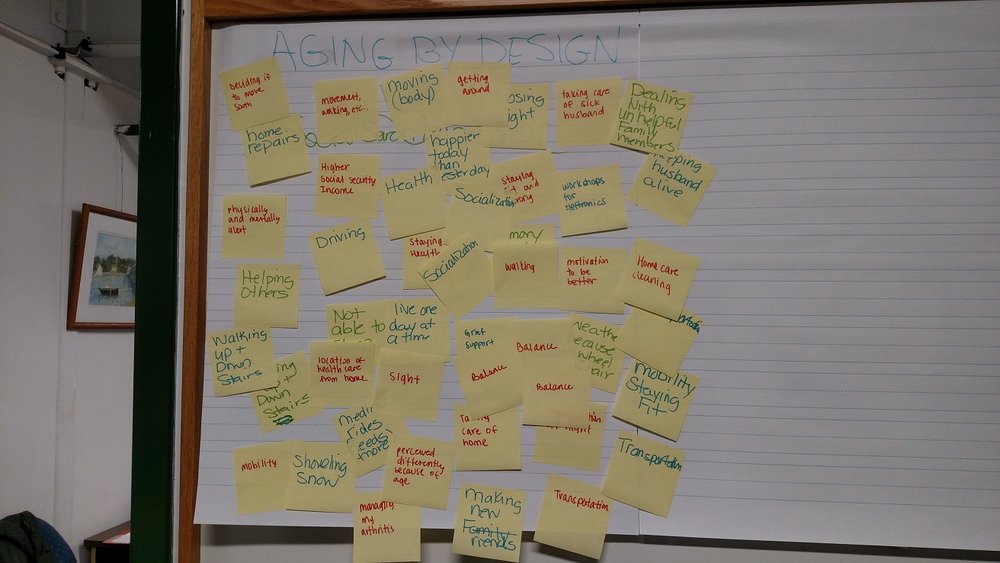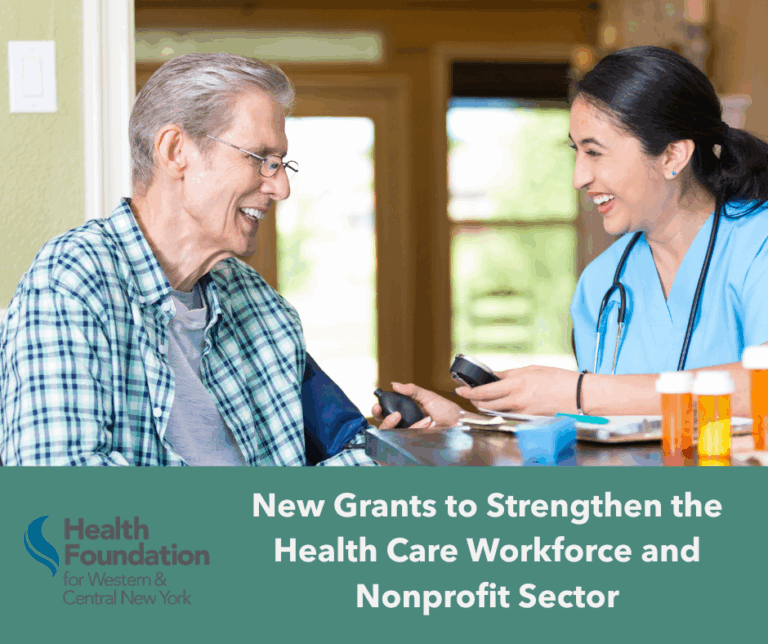

Human Centered Design prioritizes talking to and collaborating with the people who are most likely to be affected by a new program or service improvement.

Review this post for more information on how to define the problem.
A Field Trip to Canada
Before the holiday season, the Aging By Design project team took a field trip up north to Kitchener, Ontario. Postcards and empathy maps were starting to pour in, and the Overlap team was busy at work transcribing what everyone had collected. One of the first things we did on the visit was join Dave and Chelsea as they walked us through the process of ‘pulling’ need statements and other insights from the cards and maps.

We started by opening one of the many envelopes that came into the Health Foundation in December. So far, over 20 organizations have sent in more than 500 empathy maps and postcards. Dave chose a stack of postcards and handed us a few to transcribe into a spreadsheet they were working in. From those transcribed words, we worked together to read between the lines and articulate some of the needs we were reading about.
Some of the phrases were straightforward. “My biggest challenge is staying active and social” easily translates into a need statement of “I need to maintain my active, social lifestyle.”
Others were a bit more difficult. We interpreted “I like photography. Making a slideshow with my photos and putting music to them. I have a graphics program on my computer” as “I need a creative outlet.”
Over 600 needs statements were captured from the initial review of just over 230 empathy maps and postcards. “I need community resources to be close to me.” “I need to know I have the finances to retire.” “I need inclusive and accessible transportation.” “I need to not be called a senior.” The voices of older adults from across Western and Central New York started to jump off the page.

The Overlap team went through a process of categorizing these need statements into larger groupings.
“I need to learn and stay mentally active.”
“I need to understand my loved one’s medical issues.”
“I need to help/give back to others.”
These categories are just some of the needs statements that will be used as we move forward with Aging By Design. If the responses to postcards, empathy maps, and other data collection activities are the raw materials of human-centered design, need statements are the tools we use to form and shape initial ideas for solutions.
The remainder of the field trip was full of good memories with the Aging By Design project team. Project planning for the rest of the learning phase, a great dinner with the full team, and some great fried egg rolls at a local Vietnamese place rounded out the rest of the trip. With Kitchener only two hours away from the Health Foundation’s main offices in Buffalo, the ABD project team is likely to make another trip soon!
For more information on Aging By Design, visit agingbydesign.info



